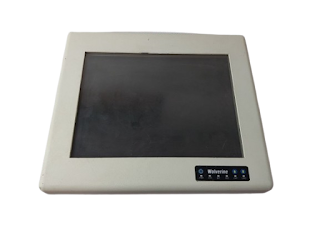Industrial automation has emerged to become a cornerstone of the current manufacturing, energy management, and process control. Here, meters play an extremely critical role in terms of ensuring that electrical, thermal, and mechanical parameters are accurately measured. State-of-the-art developments in metering technologies make industrial systems smarter, easier, and more efficient. The latest innovations in the industry's meters for automation can transform industries; the story will be unfolded in the coming lines of this blog.
1. Industrial Meters Evolution
The meters have gone through different stages from their original form that is analog in nature. The first type of industrial meter that came up was to measure basic parameters like voltage, current, and temperature. Industrial meters of the modern age are much more advanced in the form of:
Digital Readouts: High accuracy and easy to read the values
Connectivity: IoT makes real time monitoring and data sharing possible,
Automation Integration: completely compatible with industrial control systems
These have enhanced industrial systems by being more reliable and functional.
2. Critical Industrial Meters Innovations
a) Smart Meters
Smart meters are changing the face of industrial automation with more advanced monitoring and control. They include:
Two-Way Communication: It allows the smart meter to communicate with the control systems and allow for automated changes through real-time data.
Energy Consumption Know-How: Detailed statistics on consumption lead to discovering inefficiencies.
Distant Control: This allows operators to manage devices over distances.
b) Multi-Switch Meters
Meters, of old, were for just one thing. Nowadays, meters perform more than one function as one device. Here's what is included:
Power Quality Meter: Measures voltage, current, frequency, and distortion levels.
Flow Meter: Checks liquids and gases with temperature and pressure.
Environmental Meters: Report information related to humidity, temperature, and air quality.
c) IoT Enabled Meters
IoT has established a connection between the meters that communicate freely with industrial networks. IoT-based meters provide following capabilities:
Real-Time Data Streaming: Updating central monitoring systems
Predictive Maintenance: Evaluating trends for the determination of equipment failure
Cloud Integration: Maintaining data on the cloud platforms for analytics
3. Advantages of Smart Meters
New Metering technologies offer much value in industrial automation with:
Accuracy: Digital as well as smart meters reduce error percentages in measurements.
Efficiency Enhanced: The intelligence from the meters makes it an energy and resource usage maximized system.
Less Downtime: Predictive Maintenance capability reduces the frequency of no-notice failures
Reduced Operating Costs: Peak Operations reduce the running cost
Scalability: Intelligent Meters can be integrated within any growing or transforming Industrial operation
4. Topline Industrial Applications
a) Manufacturing
Meters are very important in machine monitoring, energy consumption, and production lines. Smart features such as power quality monitoring make equipment operate safely and efficiently.
b) Energy and Utilities
Meters in power plants and utility grids monitor the generation, distribution, and consumption of energy. Smart meters ensure grid modernization through demand-response strategies and renewable energy introduction.
c) Oil and Gas
Flow meters and pressure sensors are used for pipeline monitoring and safe operating practices. IoT enabled meters help in remote monitoring of off-shore platforms and refineries.
d) Food and Beverage
Environmental meters ensure that the storage and processing conditions are up to high safety standards. Energy meters assist manufacturers in saving cost without sacrificing the quality of the product.
5. Technological Trends Driving Meter Innovations
a) Artificial Intelligence (AI)
AI-based meters can parse complex data sets and can offer actionable insights. For example:
Energy Management: Identify energy usage inefficiencies through algorithms.
Fault Detection: Quickly identify and address issues with systems.
Process Optimization: Improve quality and throughput for production.
b) Edge Computing
Edge-enabled meters can process real-time data, thus providing an improved response without much reliance on cloud-based services. It will be useful to industries with high speeds or situated remotely.
c) Block Chain for Data Security
Blockchain technology allows secure data exchange for IoT-enabled metering. This is applicable to protect sensible operational data from cyber-threats.
6. Challenges with Smart Meters Integration
The latest meters in industrial automation will have some drawbacks:
High In-Circuit Costs: The advanced meter is costly to install
Integrating with Legacy Issues: Compatibility problems may exist
Data Overload: Handling and analysis of bulk data require strong systems.
Lack of Skills: The employees may require training on new technologies use.
Dealing with the problems requires proper planning and investment.
7. Future Industrial Meters
Industrial meters have a brighter future as below exciting things are hovering around
AI-Based Insights: Smart analytics and decision capabilities will be expected.
Increased Miniaturization: A smaller size but more features.
Energy Harvesting Meters: Ambient energy source with low-maintenance requirements.
Increased Sustainability: Eco-friendly materials and processes used in meter design.
8. Choosing the Right Meters for Your Industry
Choosing the right meters for industrial automation depends on the following:
Measurement Requirements: Identify what matters to your operations.
Connectivity: Ensure that they will be compatible with existing automation systems.
Accuracy and Precision: Seek equipment that meets your specified tolerances.
Scalability: Choose meters that can scale to meet future needs.
Cost: Compare up-front costs against long-term benefits.
9. Best Industrial Advanced Meter Manufacturers
There are several major companies driving innovation in industrial metering technologies. Some of the top ones include Siemens, Schneider Electric, ABB, and Yokogawa, each offering a range of advanced meters specifically designed for industrial automation.
Conclusion
Latest innovations in meters are changing the face of industrial automation by not only making the systems efficient and reliable but also intelligent. Innovations from smart and IoT-enabled meters to AI-powered analytics provide industries the competitive edge in an increasingly automated world. The investment in smart metering solutions improves not only the operational efficiency but also gives a pathway for sustainable growth. Keeping abreast with the latest trends and technology would open the whole potential of industrial automation for businesses.










